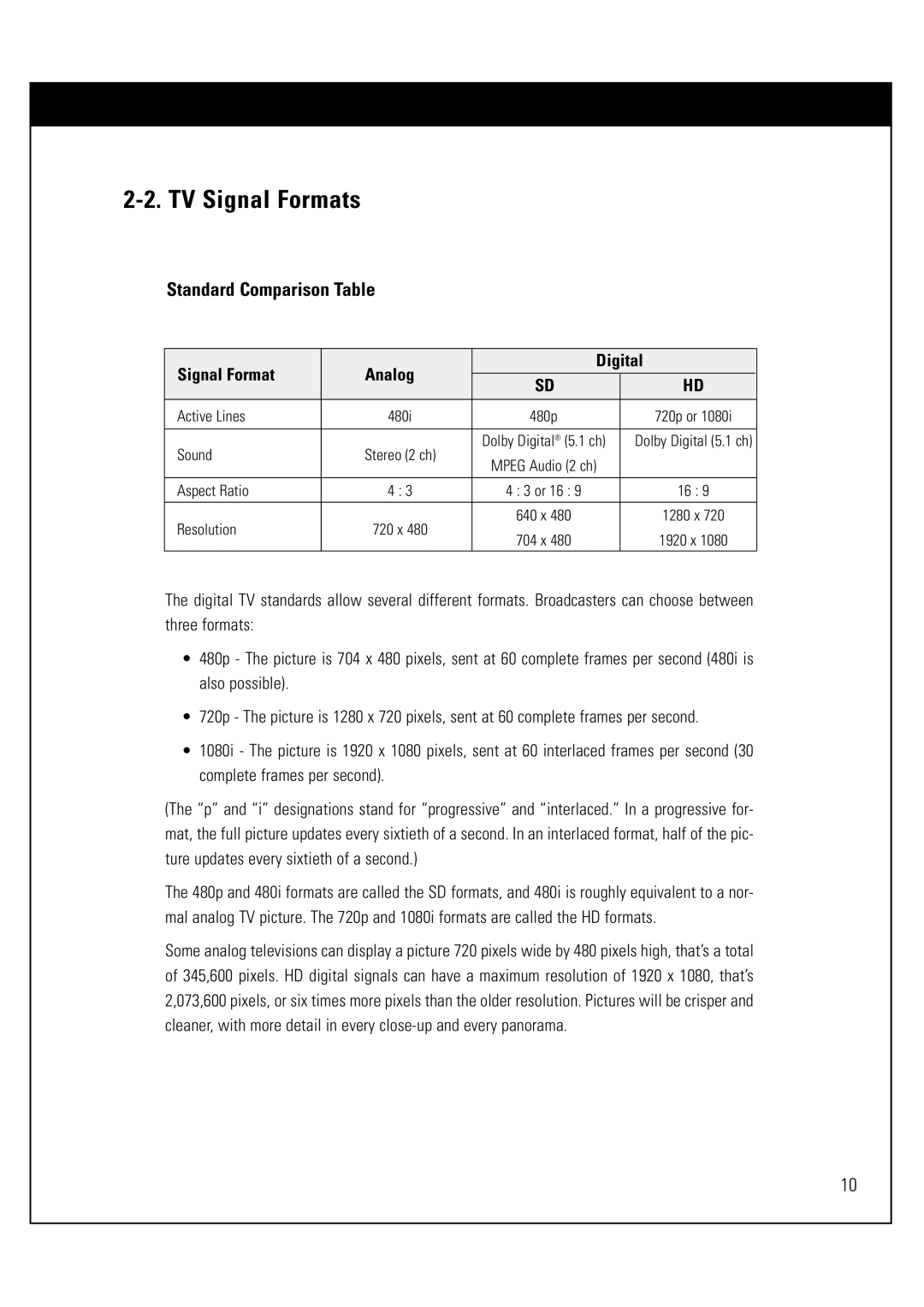
2-2. TV Signal Formats
Standard Comparison Table
Signal Format | Analog | Digital | ||
SD | HD | |||
|
| |||
Active Lines | 480i | 480p | 720p or 1080i | |
|
|
|
| |
Sound | Stereo (2 ch) | Dolby Digital® (5.1 ch) | Dolby Digital (5.1 ch) | |
MPEG Audio (2 ch) |
| |||
|
|
| ||
|
|
|
| |
Aspect Ratio | 4 : 3 | 4 : 3 or 16 : 9 | 16 : 9 | |
Resolution | 720 x 480 | 640 x 480 | 1280 x 720 | |
704 x 480 | 1920 x 1080 | |||
|
| |||
The digital TV standards allow several different formats. Broadcasters can choose between three formats:
•480p - The picture is 704 x 480 pixels, sent at 60 complete frames per second (480i is also possible).
•720p - The picture is 1280 x 720 pixels, sent at 60 complete frames per second.
•1080i - The picture is 1920 x 1080 pixels, sent at 60 interlaced frames per second (30 complete frames per second).
(The “p” and “i” designations stand for “progressive” and “interlaced.” In a progressive for- mat, the full picture updates every sixtieth of a second. In an interlaced format, half of the pic- ture updates every sixtieth of a second.)
The 480p and 480i formats are called the SD formats, and 480i is roughly equivalent to a nor- mal analog TV picture. The 720p and 1080i formats are called the HD formats.
Some analog televisions can display a picture 720 pixels wide by 480 pixels high, that’s a total of 345,600 pixels. HD digital signals can have a maximum resolution of 1920 x 1080, that’s 2,073,600 pixels, or six times more pixels than the older resolution. Pictures will be crisper and cleaner, with more detail in every
10
